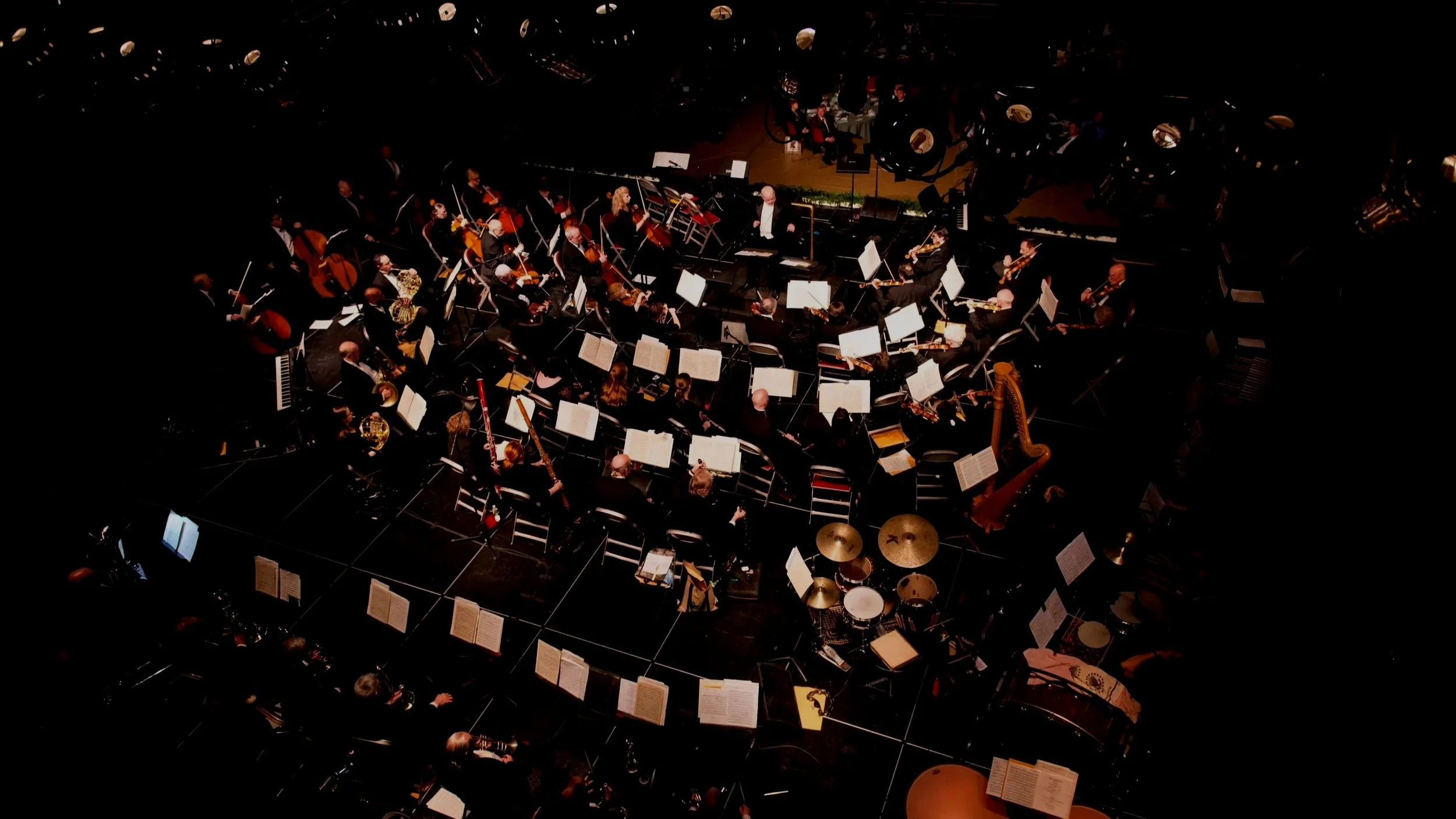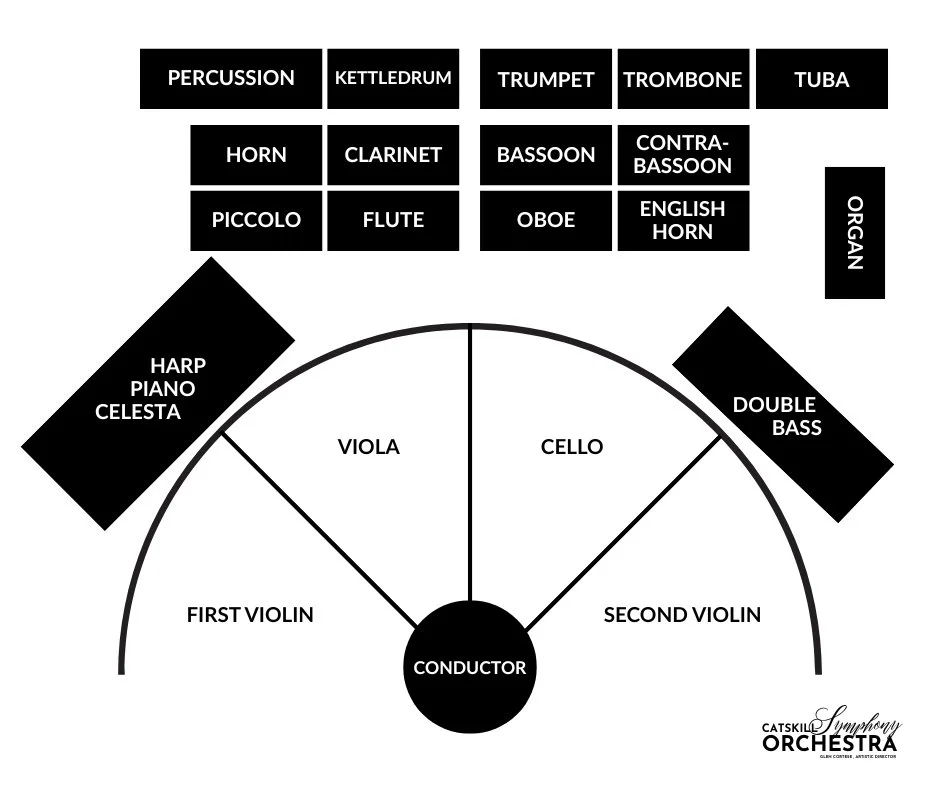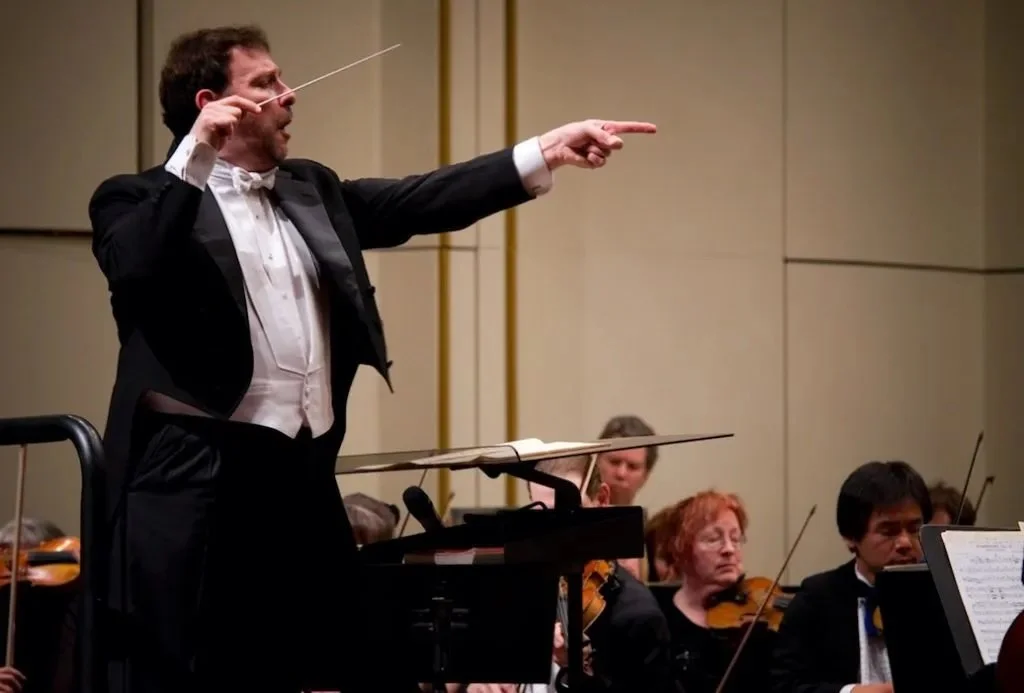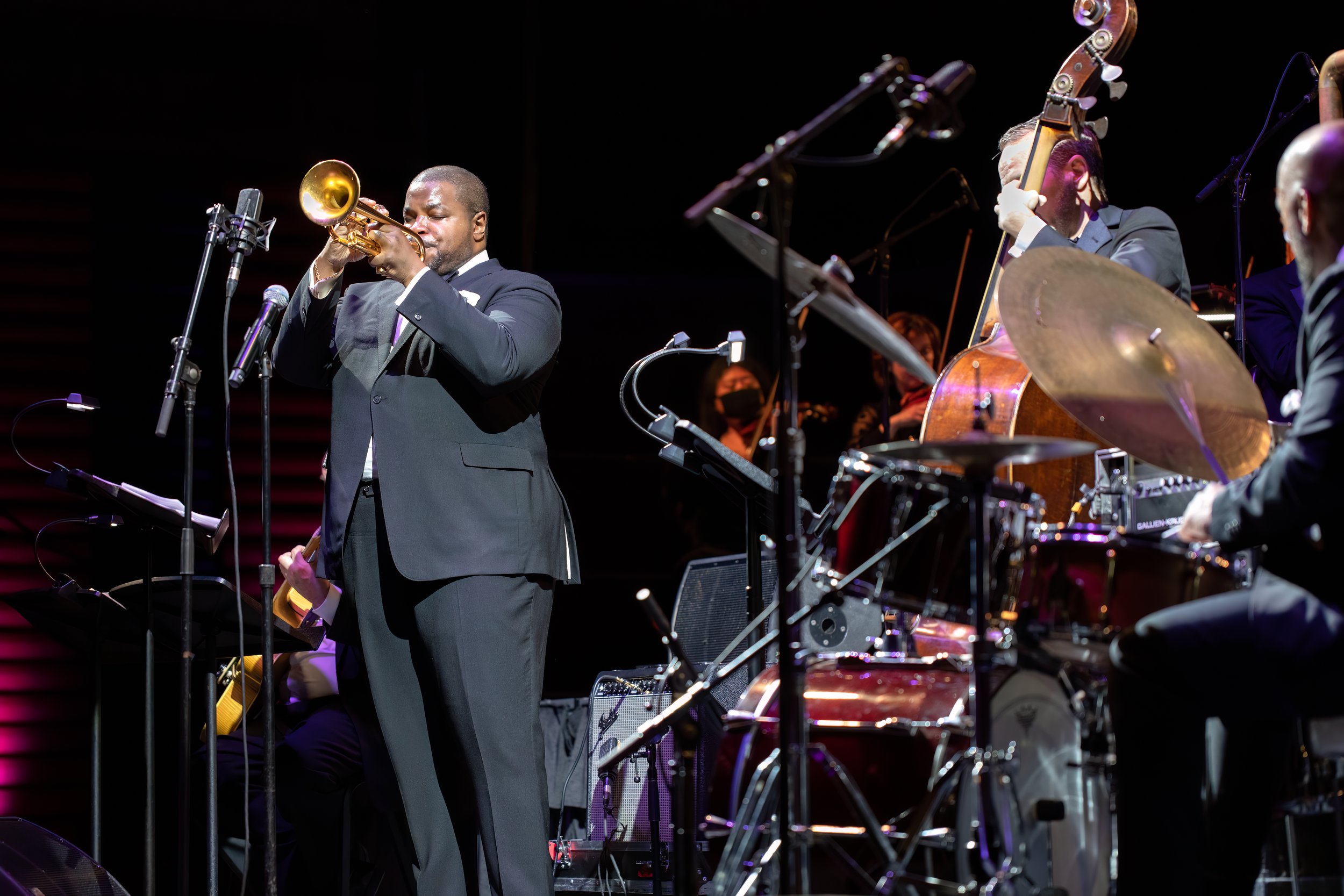
Symphony 101
Your guide to enjoying the Symphony!
Welcome!
Whether this is your first concert or your hundredth, we're thrilled you're here. This guide will help you get the most out of your symphony experience. There's no "wrong" way to enjoy music—just relax, listen, and let yourself feel!
The Orchestra Layout
A symphony orchestra has four main families of instruments, typically arranged in a semi-circle around the conductor:
STRINGS (front and sides, the largest section): Violins, Violas, Cellos, Basses
WOODWINDS (center-middle rows): Flutes, Oboes, Clarinets, Bassoons
BRASS (behind the woodwinds): Trumpets, French Horns, Trombones, Tuba
PERCUSSION (back of the stage): Timpani, Drums, Cymbals, Xylophone
Fun Fact: A full symphony orchestra has between 80 and 100 musicians! The string section alone makes up about 60% of the orchestra, which is why there are so many violins up front.
What is the role of the Conductor?
The Conductor is much more than someone waving a stick! Here is what they are actually doing:
Sets the tempo: keeps everyone playing at the same speed
Shapes the sound: signals when to play louder, softer, or with different emotion
Cues entrances: tells musicians exactly when to start playing
Interprets the music: makes artistic decisions about how the piece should sound
Unifies the orchestra: ensures all musicians play as ONE
Watch the conductor’s hands—one hand usually keeps time while the other shows expressions and dynamics.

Phones & Devices: Please silence (not vibrate) your phone. Even a lit screen can distract performers and nearby audience members. Smart watches too!

When to Applaud: Clap between pieces, not between movements. If you're unsure, wait to see what others do—no one will judge! Always applaud at the end when the conductor lowers their arms and turns to face you.

During the Music: Try to minimize noise—unwrap candies before the music starts, silence coughs if possible. But if you need to cough, don't stress! Everyone understands.

Late Arrival: Ushers will seat you at an appropriate break if you arrive late. This isn't meant to be unwelcoming—it just prevents disruption during quiet moments!

Photos & Video: Usually not permitted during performance (check your program). Feel free to take photos before or after the concert, or during bows!

Dress Code: Wear whatever makes you comfortable! You'll see everything from jeans to formal wear. Come as you are!
Musical Terms You Might See
Movement
A self-contained section of a larger work. Think of it like chapters in a book. Don't applaud between movements—wait until the entire piece is finished.
Concerto
A piece featuring a solo instrument (like piano or violin) with orchestra accompaniment. Showcases virtuoso playing.
Allegro, Andante, Adagio
Italian tempo markings. Allegro = fast and lively, Andante = walking pace, Adagio = slow and expressive.
Pizzicato
When string players pluck their instruments instead of using the bow. Creates a distinctive "plink" sound.
Symphony
A large-scale work for orchestra, usually with 3-4 movements. Typically lasts 25-45 minutes.
Overture
An orchestral introduction, often to an opera or play. Usually a single movement lasting 5-15 minutes. Perfect "starter piece" for a concert!
Forte (f) / Piano (p)
Volume markings. Forte = loud, Piano = soft. Multiple f's or p's mean even louder or softer (fff = very, very loud!).
Crescendo / Decrescendo
Gradually getting louder or softer. Creates dramatic tension and release.
How to Listen
There is no single “right” way to experience a symphony, but here are some tips:
Follow a musical theme: composers often introduce a melody and then repeat it throughout the piece—sometimes louder, sometimes in a different instrument, sometimes turned upside down! Try to spot when you hear it return.
Close your eyes: Shutting out visual distractions can help you hear more deeply. What emotions does the music evoke? What colors or images come to mind?
Watch the musicians: notice how they communicate through eye contact and body language. See if you can spot the principal players (section leaders) who sometimes have small solos.
Read the program notes: learning about what inspired the composer or what was happening in their life can make the music more meaningful. But don't feel obligated to read during the performance—that's what intermission is for!
First-Timer Tip: Don't worry about "understanding" everything. Let the music wash over you. You might feel energized, moved to tears, or even a little sleepy during slow movements—all totally normal reactions!
Before the Concert
Arrive 20-30 minutes early. This gives you time to find your seat, read the program, grab a concession, visit the restroom, and soak in the atmosphere as musicians warm up on stage.
Tuning Up
About five minutes before start time, the principal oboist will play an "A" note, and everyone tunes to match. This ensures the orchestra sounds unified. Then the concertmaster (principal first violin) enters to applause, followed by the conductor.
Intermission
Usually 15-20 minutes. Stretch your legs, discuss what you've heard, grab a drink. Most concerts have one intermission dividing the program in half.
After the Final Note
Wait until the conductor drops their arms and turns around before applauding. Often the conductor will gesture to highlight featured sections or soloists—that's your cue to give them extra applause!





